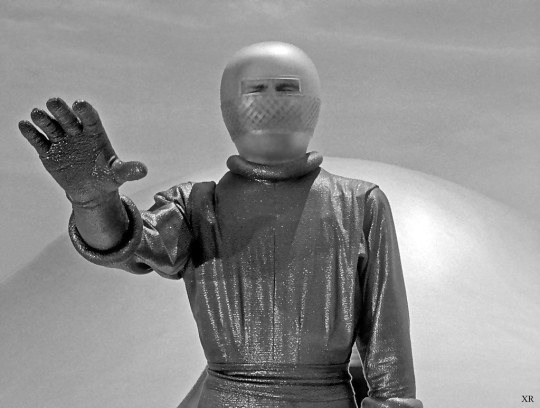#Scifi 1950
Text



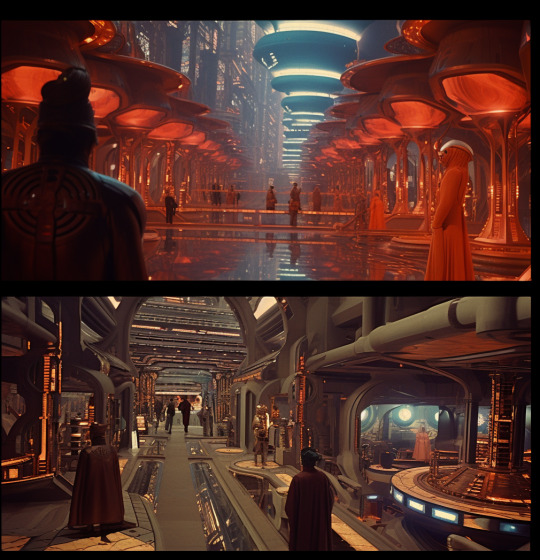
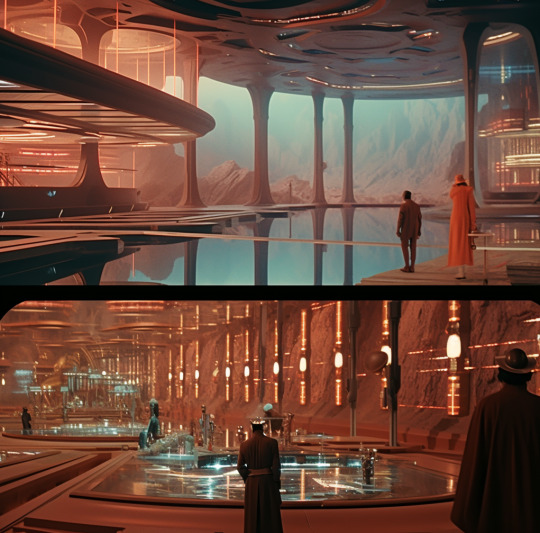
Cinematic science fiction was characterised in the 1950s above all as an adventure centred on space (the theme of the literary space opera), whether it was setting out from our planet to explore its infinity (The Forbidden Planet, 1956), or its mysterious inhabitants visiting our Earth, often revealing less than benevolent intentions. In this sense, Pedro Jvanisevic's film, breaks away from this vein, exploring the future of humanity among Android robots, anticipating Blade Runner and other films of this genre.

#future#cyberpunk#rootsinthefuture#sci-fi#futuristic#science fiction#sci fi#robots#cyberart#androids#1950s vintage#1950s movies#Scifi 1950#Movie#retro scifi#best scifi movie#sci fi art#fake#midjourney ai#midjourneyart
572 notes
·
View notes
Photo
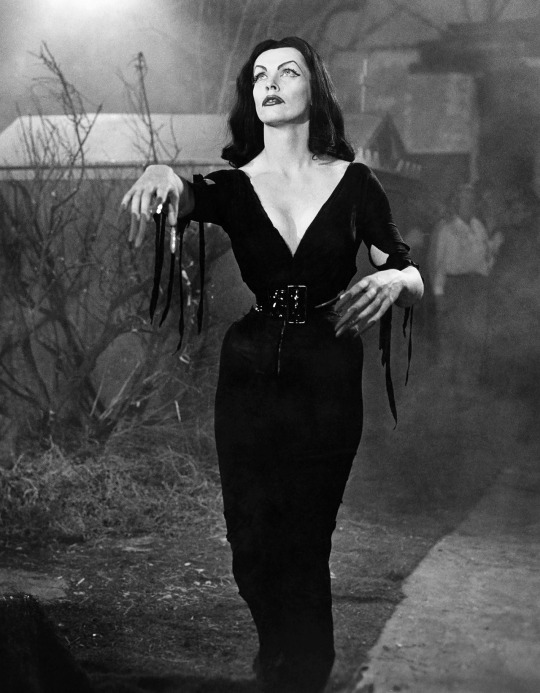
Vampira, a.k.a. Maila Nurmi, on the set of Plan 9 from Outer Space, 1956
#vampira#horror#maila nurmi#1950s#plan 9 from outer space#goth#vamp#scifi#ghoul#ed wood#plan nine from outer space#on set#film#vintage#black and white#photography#photo edit
2K notes
·
View notes
Text
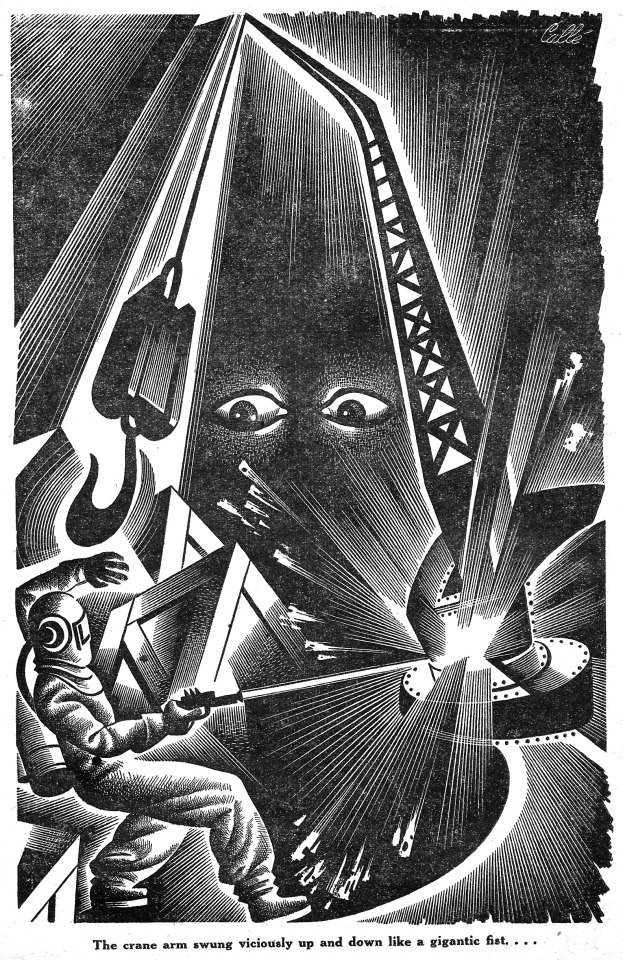
Half-Life illustration by Calle
Super Science Stories, September 1950
#super science stories#1950#1950s#calle#vintage#scifi#scifi art#science fiction#science fiction art#art#illustration
541 notes
·
View notes
Text

A book you very likely don’t have on your shelf #446
1958
#1958#1950s#1950's#john wyndham#cover art#book cover#paperback#vintage paperback#science fiction#scifi#sci fi#sci-fi#ephemera
188 notes
·
View notes
Text
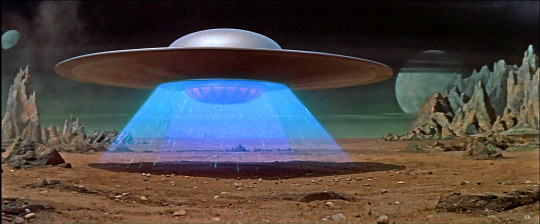
#IFTTT#Flickr#sf#mars#illustration#vintage#ads#advertising#space#ad#astronaut#aliens#retro#nasa#nostalgia#1940s#1950s#spacestation#scifi#americana#sciencefiction#spaceship#1956#1960s#outerspace#tomorrowland#atomic#populuxe#rocketship#cosmonaut
55 notes
·
View notes
Text

Other Timelines, Other Lifetimes Series…
The 50s (2 of 3) - Spacetime Sally's Beautiful Tomorrow, 1950s atompunk inspired sci-fi. This has that classic 50s feel and acts as a bridge between the vintage 20s/30s/40s inspired work to the more modern New Wave sci-fi of the 60s and 70s.
#scifi#retro#art#artwork#retro futurism#ai art#ai artwork#scifi art#science fiction#scifi aesthetic#scifi style#1950s sci fi#1950s style#1950s
111 notes
·
View notes
Text


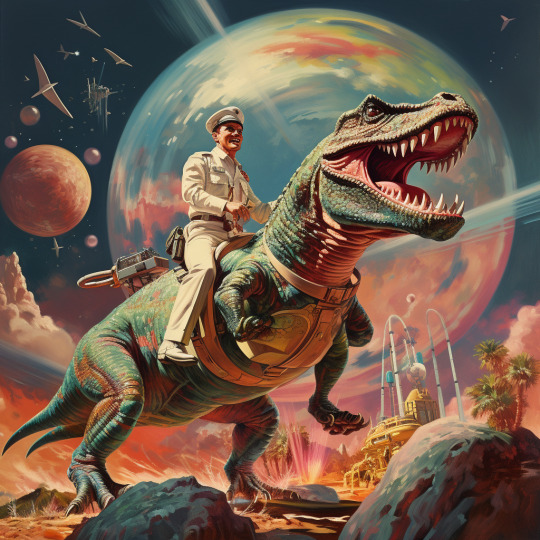

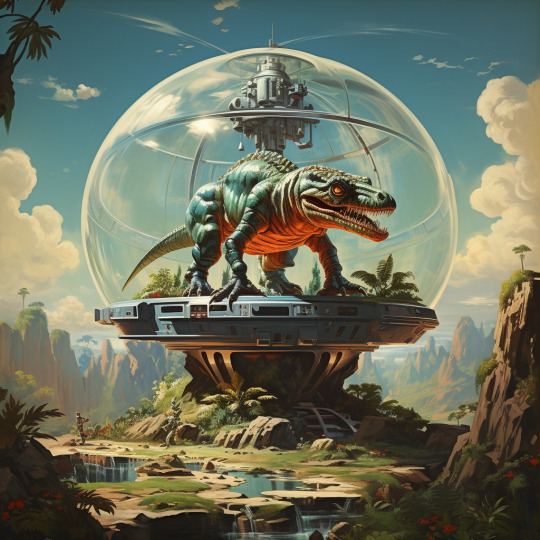
#artificial intelligence#midjourney#ai art#futurism#scifi#space#retrofuturism#retro scifi#cyborg#1970s#1950s art#1950s#future america#america
272 notes
·
View notes
Text
The First Scifi Radio Shows, 1950-1951
Debuting within a month of each other in 1950, the first scifi anthology radio shows first aired: the better known Dimension X, which was preceded a month earlier by 2000-Plus.
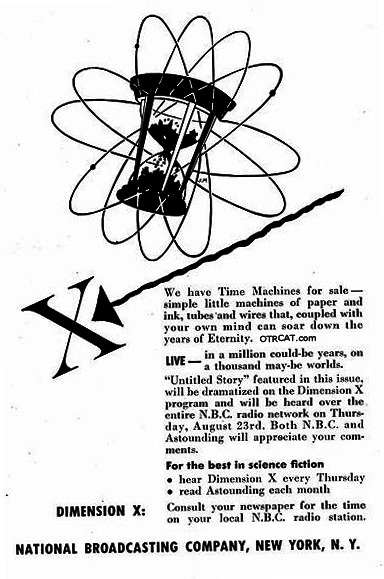
Posterity remembers Dimension X much better for several reasons. The first is that it licensed scifi stories by Arthur C. Clarke and Asimov and other writers to adapt. The second is that Dimension X used the first electronic instrument, the theramin, to give itself an eerie and distinctive, unearthly and futuristic sound. The theramin would later be used in 1954's Forbidden Planet, inspired by the Dimension X score, and something once played alongside orchestras would thereafter be the official sound of scifi, UFOs and arriving aliens.
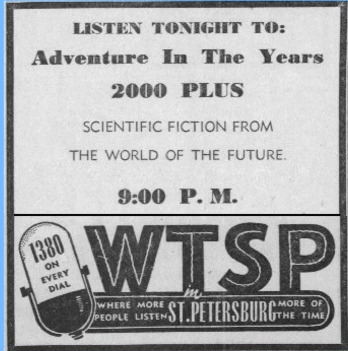
One would be forgiven for remembering that 2000-Plus premiered a full month before, and had completely original stories, as the first scifi program of any kind. Both shows wrapped up in 1951, which was around when radio itself started to be replaced by television.
Both are currently on archive.org, where they can be listened and downloaded in their entirety.
158 notes
·
View notes
Text

Salvador Dali Santiago El Grande. 1957. Oil on canvas: 407 × 304 cm (13ft 4in. × 9ft 11in.) .
#salvador dali#cosmic#dreams#1950s#scifi#mysticism#retro#20th century#art history#surreal#horse#spirituality#metaphysical#supernatural#history#culture#beauty#art#magic#fantasy#santiago el grande
46 notes
·
View notes
Text


Illustrations by Emsh (Ed Emshwiller) for Alfred Bester's The Stars My Destination. Galaxy Magazine, December 1956.
#emsh#ed emshwiller#alfred bester#galaxy magazine#scifi#science fiction#vintage sci fi#vintage illustration#1950s#50s
103 notes
·
View notes
Photo
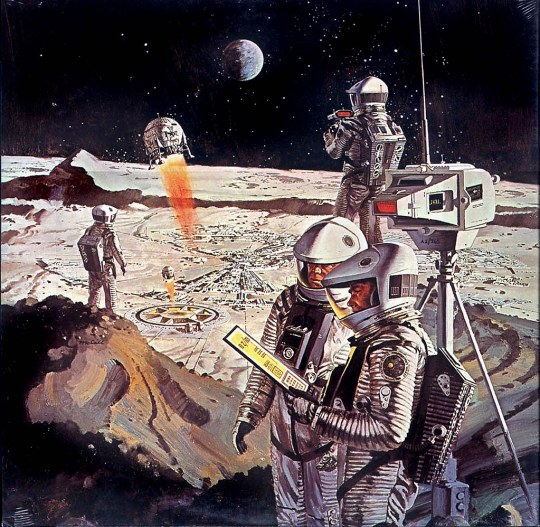
1968 ... '2001' lunar surface- Robert McCall https://flic.kr/p/83vudM
272 notes
·
View notes
Text

#rootsinthefuture#sci-fi#science fiction#sci fi#cyberpunk#stable diffusion#ufos#scifi 1950#1950s vintage#1950s
372 notes
·
View notes
Text
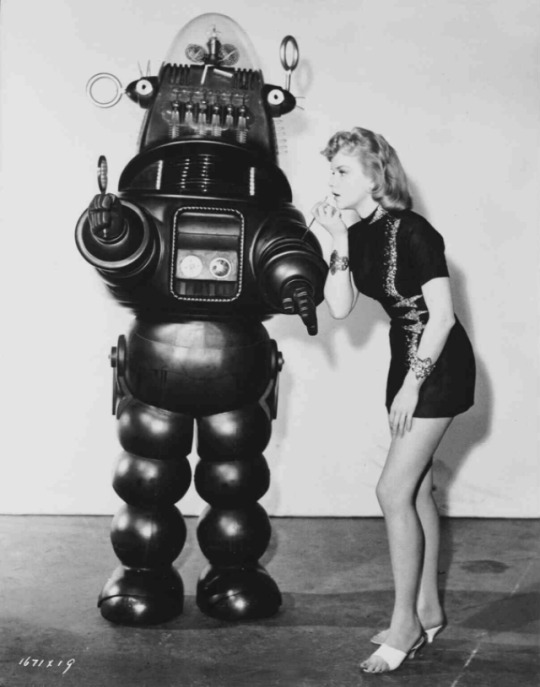
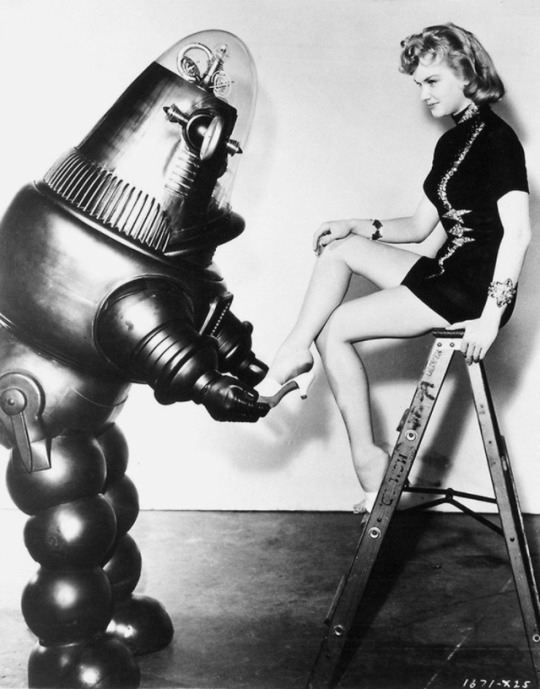
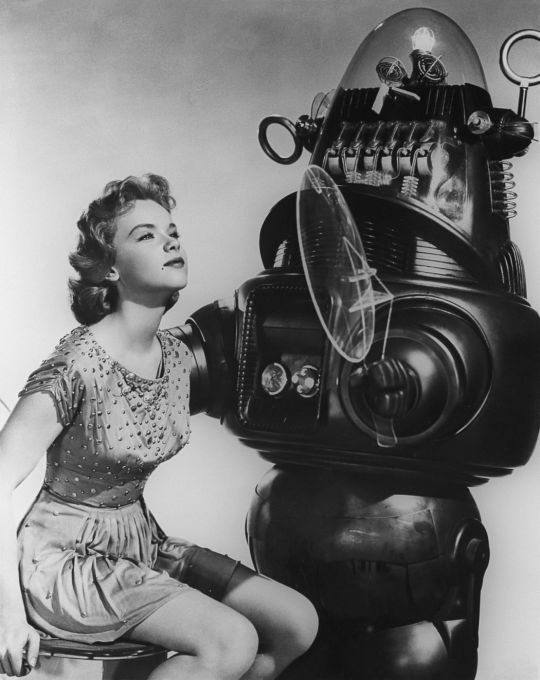
Anne Francis and Robby the Robot promotional shots for the 1956 MGM classic, Forbidden Planet.
149 notes
·
View notes
Text

"Homage to Flash Gordon" by Al Williamson and Frank Frazetta, 1953
#flash gordon#frank frazetta#al williamson#1953#1950s#vintage#art#illustration#scifi#scifi art#science fiction#science fiction art
229 notes
·
View notes
Text
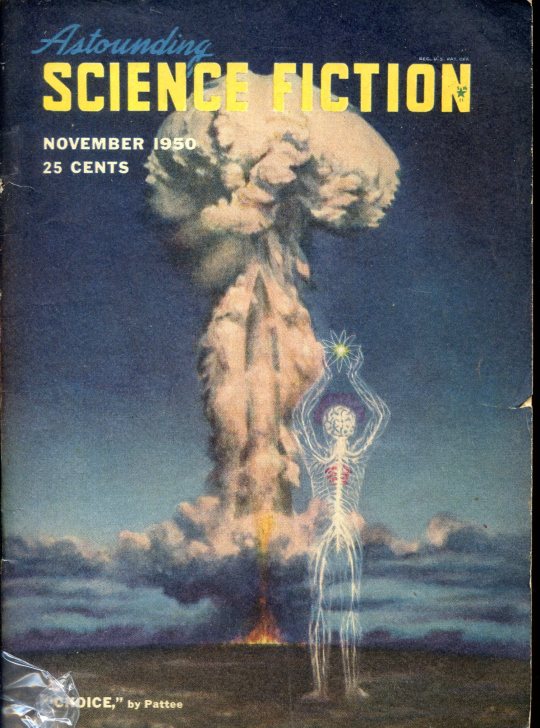
Cover by D. Pattee
#cover art#coverart#magazine#magazine cover#1950#astounding#science fiction#scifi#1950s#1950's#mushroom cloud#pulp magazine art#pulp#humor
247 notes
·
View notes
